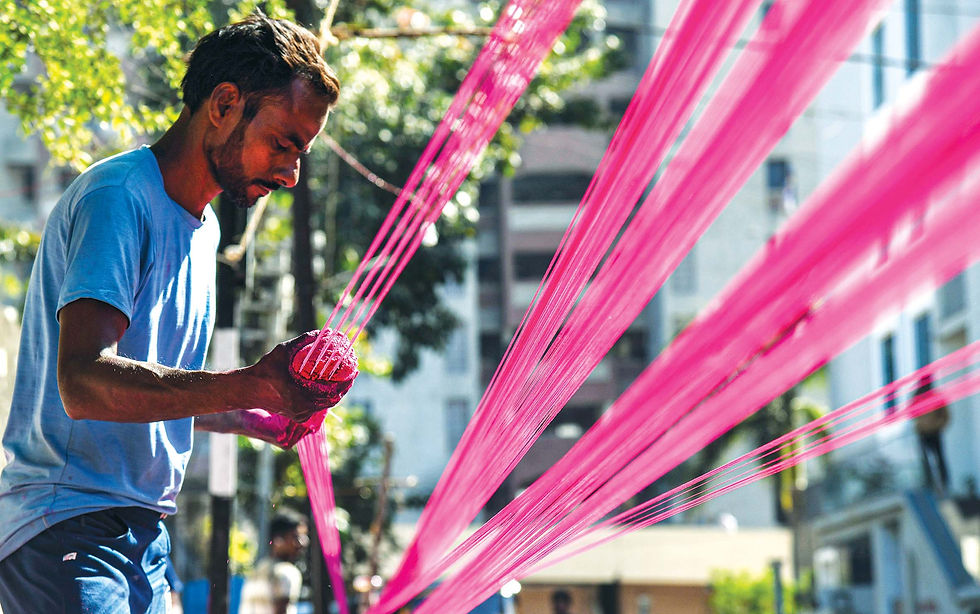The Elusive Terrorists: Why it takes Time, Toil, and a Toll to Get Them
- Brigadier AS Ranade, VSM (Retired)

- May 14
- 4 min read
In Part 1 of this article, we explore how, even three weeks after the Pahalgam massacre, the terrorists remain at large in the forest above Baisaran.

Fifteen days after 26 tourists were brutally killed in Pahalgam, India launched "Operation Sindoor" in retaliation, but the attackers remain at large. This article examines the complexities of counter-terror ops, the challenges faced by security forces, and why defeating terrorism takes more than sheer numbers.
Around 198 km of International Boundary (IB) separates Pakistan’s Sialkot-Shakargarh plains from Jammu-Kathua in J&K. This sector is marked by uneven terrain, seasonal nullahs, boulder-strewn rivulets, perennial rivers, and dense wild grass, making surveillance and control difficult.
The Border Security Force (BSF) mans the first tier along the IB, deploying Border Outposts (BOPs) along the border fence. These BOPs send out ambush teams and checkpoints (“Nakas”) to prevent illegal crossings and infiltration.
Pakistan has long exploited this stretch for infiltration, especially after the Anti-Intrusion Obstacle System (AIOS) was built along the Line of Control (LoC) from Akhnoor to Gurez between 2003 and 2005. With the LoC better secured, the IB sector remains more vulnerable.
Unlike the LoC, the Army has no permanent deployment here. Units rotate from peace stations for training and operate along the “Ditch-cum-Bund” defensive line. During this phase, they patrol, ambush, and monitor the area as a second tier of counter-infiltration. However, the sector still has gaps and lacks the depth and density for full control.
Pakistan sees this route as a quicker, less contested path to Doda, Kishtwar, and the Kashmir Valley. Overground Workers (OGWs) assist infiltrators at pick-up points along the Pathankot-Jammu highway, hiding them in trucks bound for the Valley. With hundreds of trucks daily, thorough checks are nearly impossible without specific intel. While a few terror-laden trucks have been caught, such cases are rare. This is how Muhammad Umar Farooq, the Pulwama bomber, reached South Kashmir in April 2018, months before assembling the car bomb used in the February 2019 CRPF convoy attack.
Beyond the International Boundary (IB), the Line of Control (LoC) runs 475 km from Akhnoor to Gurez, with another 300 km through Ladakh’s rugged terrain. The Indian Army is heavily deployed along the LoC, with the BSF covering low-threat areas. The aim is to hold key ground and deter Pakistani attempts to alter the LoC and threaten India’s territorial integrity.
Still, not every stretch can be physically held. Gaps are covered through patrols, ambushes, surveillance, and firepower. A second tier runs along the Anti-Infiltration Obstacle System (AIOS), or “the Fence,” which acts as a tripwire against infiltration. Though well-lit at night, like the IB fencing, patches of darkness remain.
The LoC and AIOS have a stronger troop presence than the IB sector, but determined infiltrators can still find gaps. Rugged mountains, dense vegetation, and forested slopes aid infiltration and make sealing all routes nearly impossible. Snow, harsh cold, and poor weather further reduce surveillance effectiveness, limiting visibility and increasing infiltration risks.
Long tenures on the LoC and AIOS for the Army, or in border guarding for the BSF, take a toll on soldiers, affecting operational efficiency. Some ask why we don’t deploy more troops to plug every gap, but resources are limited. Each soldier adds financial strain—equipment, housing, and pay.
Thousands of infiltrators have been eliminated over the years, and many more will be if Pakistan refuses to change course. Yet, despite our intent, training, and professionalism, infiltration cannot be stopped entirely due to several challenges.
Equally vital is a strong third tier for counter-terrorism in the hinterland, covering towns, nearby forests, and high ground. Infiltrators aim to reach these areas for shelter, support, radicalisation, and attacks. They link up with local terrorists who haven’t crossed over for training. These locals and OGWs act as their eyes and ears, key to their survival and operations.
Hunting a small group of terrorists in vast forested mountains is like finding a needle in a haystack. Security forces deploy in large numbers, splitting into small teams to cover ground and block escape routes. More troops risk losing surprise; fewer reduce the chances of locating the hideout, even with intelligence narrowing the search to a one-square-kilometre area.
If terrorists remain hidden, troops can pass metres away without spotting them. Steep slopes, caves, boulders, dense canopy, and uneven terrain complicate searches. If fired upon, troops must respond carefully to avoid friendly fire. Terrorists, however, can fire freely, with terrain shielding them from return fire.
At night, visibility drops, making coordination and response harder, giving terrorists the advantage. Drones offer real-time data, but spotting terrorists among troops, villagers, or animals is difficult. Thermal images can mislead, and equipment often falters in bad weather or from wear.
Operations can’t continue indefinitely—fatigue sets in after 72–96 hours, requiring rotation. Fresh teams need orientation and coordination to maintain momentum. The odds in forest operations favour the terrorists. Yet, search-and-destroy missions have yielded success in the past and will continue to, albeit with occasional losses.
(The author is an Indian Army veteran and Vice President CRM, ANSEC HR Services Ltd. He is a skydiver and a specialist in Security & Risk Management. Views personal.)





Comments